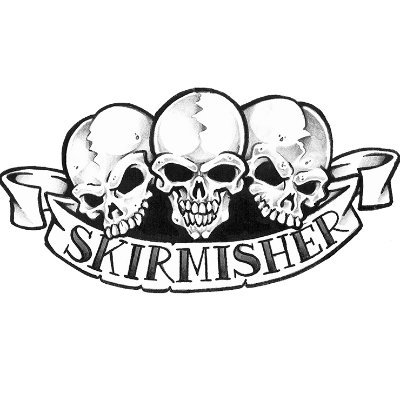Obsidian Portal Campaign of the Month October 2023: Thieves & Kings
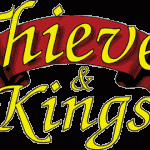
Well met and welcome to Argoth, the land of Thieves & Kings — our October Campaign of the Month winner! GM Robling is no stranger to our crown of conquerors, and adds to his accolades with some of the best world-building and writing you’ll read this side of the City of Bright Sails. Thieves & Kings has been many years in the making and promises to take adventurers from humble inns to fey courts to powerful portals into the realms beyond understanding. Warm your worn hands by the common room fire and listen to our tale…

What’s new in your life since your Campaign of the Month win in 2014 for “Battletech (Farscape): The New Breed”?
Practically nothing, though, fundamentally, COVID changed all our lives, neh?
“Thieves & Kings” has many chapters and hundreds of gaming sessions spanning seven years of real time. We know it would be impossible to sum up everything, but could you give us an overview of the story, so far?
Overview, hmmmm. It started with six players, each representing a character, who had been fostered for their youth to various clans across the realm of Shem, being informed their adopted father had died and left them his farm. They gathered and discussed matters, and were immediately involved in an assassination, and fled the town of Hexwater a few steps in front of the local law. Over the next few months, they established themselves in the region of Thornkeep, and discovered the local mystery around a troll invasion, the local fey creatures, and mistakenly (?) began hunting a former fey hag as their chief enemy. As the years progressed, they began to acquire divine powers and discovered that their former enemy “Blackmaw” wasn’t so bad, really, and that she was fighting someone who was far worse, “The Great Hunger”, her former lover. At present, the survivors have decided they wish to embrace these offers of divine power, and are sorting-out how to achieve true divinity as a Demi-God. But their enemy, The Great Hunger and his followers, know them and work to unravel their plans as they unravel his.
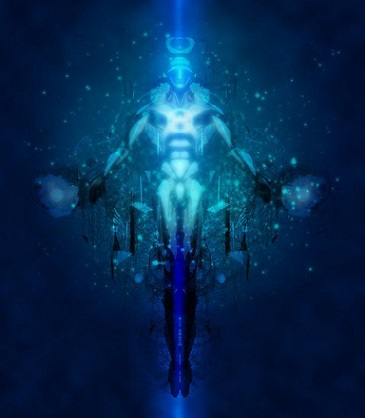
The continent of Argoth and the world of Kethira as a whole is extensively catalogued in your wiki — it’s a veritable library of information that has been built up since your school days. And the character section is absolutely full of people and stories. What were your favorite bits to write and what parts of the site do you find most useful?
It’s extensive because of the years of effort both I and my players have placed into it. The efforts of today’s campaign reflect in the campaigns to come, and that forms a very wide amount of information that never makes the WIKI or Portal files, but exists, nonetheless. The ability of the Obsidian Portal website allows a wide disbursement of information, including bios, stats and even connects them to items and other characters, because each has their own story to tell and share. I’ve found if you approach each NPC as a real person, and treat their reactions as real and honest from *their* point-of-view, it enriches the encounters with the players, and then influences future encounters.
At the end of the wiki for “Thieves & Kings” there is a section on customized rules for the campaign — many adapted from various supplements and systems and modified to fit your needs. The Rulership and Thieves’ Guild Operation rules were especially interesting. How have these worked out for you and your players during the game?
I established each for the players to read and decide which version they wished to implement for various campaign management operations. Most were discarded, as the group slipped away from large-scale management of armies and realms, and decided to concentrate on small, close-knit organizations of their own, dealing with dozens of people, rather than hundreds. The “Thieves’ Guild” operations remain important, as one of the players has worked to establish their control over the underworld of Mornhaven, and allows us to abstract that aspect of the game enough to concentrate more on the role-play and combat. Which was kinda the point of them, really.
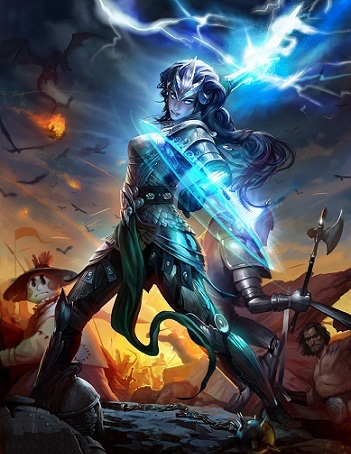
According to your Obsidian Portal bio, you have tried out many game systems and have a lot of experience with a variety of settings and game mechanics. From your perspective, what are the advantages and disadvantages of 5th Edition D&D compared to other games? Was shifting Argoth from other editions into 5th Ed. a challenge? Are there any plans to convert it into other systems in the future, if needed?
The advantage of 5th edition, I feel, is that it remains very robust in sliding back and forth between combat and role-playing, and allows exploration to be easily adapted to the encounters. If you compare it to early editions, it allows a great deal of mobility and movement to combat, which allows players to shine, rather than simply two characters beating on each other, whittling away HP as they go (*Cough Cough* 2nd Edition *Cough*). Pathfinder is nice, but too dependent on Prestige classes and Feats determining each encounter, whereas 5th Ed allows simpler math and makes the combat flow swiftly. I don’t think we’ll be transitioning into D&D One anytime soon, if ever, and the recent “home rules” introduced by Larian Studios “Baldur’s Gate 3” are intriguing and show how simple rules changes can make a difference in playstyle and encounters, and bears scrutiny.
The Adventure Logs for “Thieves & Kings” feature a clever format — a quotation, an inspiring image, and a video link to help set the mood. Are these atmospheric touches selected prior to a game session or afterward? Do you find that reinforcing the moods or themes during gameplay to be important or is it better to let the players create their own impressions?
I have found my players don’t typically pay much attention to them, until suddenly in the middle of an encounter they remember the title of the episode, or the picture, or the video, and it all falls into place in their minds. That’s the point of it, really, to hint a little and to provide some real physicality at a key part of the episode. Sometimes, however, they ignore it completely, and go out into left field, and the title proves irrelevant, as they choose to follow a new line of investigation from what they said they wanted to at the end of the last session. But that’s okay, because, ultimately the Players have the power, and choose where they want to go and what they want to accomplish. I simply provide options.
As to mood, I’ve found sometimes that you can lead the players to the encounter,and set the mood, but if they’re not into it, they won’t care. Sometimes they just want to chew gum and fight, and they forgot their gum.

What have been your favorite moments in the campaign, so far?
The sudden realization that one of the main characters, Blackmaw, wasn’t really so bad after all. She’s unabashedly NE, but they have accepted her as an ally, because she doesn’t see them as rivals, and sometimes they prove to be useful pawns to play. Her reveal of her love for her monstrous children to the party was especially precious, and one of the players said it was the highlight of the campaign to her. “Blackmaw” is my favorite NPC of all time.
Also the moment they were confronted with the knowledge there were actually seven children raised by their father, and they had another “sister”. At that point, they realized that the place they had been investigating was called “The Hall of Seven”; and they realized a truth they had known for months, but never clued into. Later, she swindled them to acquire a magical artifact with them, and during that reveal, they realized they’d been utterly taken advantage of, and never trusted anyone for a long time afterwards. They really didn’t like or trust her for a long time, though now they are openly working with her. “Skazzy” is a favored NPC this campaign.
Without giving too much away, what hints can you give us about the plans (if there are any) for the conclusion of the tales of “Thieves & Kings”? Or is this the kind of adventure that might go on for as long as possible?
The players know the ultimate goal of the campaign is to achieve demi-godhood, and the defeat of The Great Hunger. Only a couple of levels away from that, they understand their goal, and know that their characters are going to become demigods in the campaigns to come, so they have a vested interest in achieving this goal. Back when they gained their first “Divine Level”, they established the path of their cult, and its worship, and now it’s all about following-up with this to achieve their proclaimed status. We just started talking about what the next campaign might be…

During your first interview with Obsidian Portal for your prior Campaign of the Month win, you wisely advised GM’s to avoid being adversarial and to “Be the storyteller, and make the players the focus of the campaign.” In the years between then and now, what other insights have you gleaned regarding the craft of game-mastering, writing, and world-building?
Don’t plan too much. While I run an open-world campaign format, and for the most part, the players are quite willing to stay close to home. They really have so much to explore closeby, that they don’t *need* to travel much. Just have a couple of adventures handy that you know well and can adapt on the fly, and apply, whenever the players decide to “go rogue”. And they will go rogue on you in an open-world format. Otherwise keep plenty of notes so you can allow them to explore the world around them, and forge their own destiny. If you have notes from previous campaigns handy, they can travel over lands from previous campaigns, and realize what their previous characters have done, and how much effect their actions have at the moment and reaching into the future.
If you want the Players to travel, provide them with the means; Teleport Circles and Flying Boats (Spelljammer), or even just normal boats, allow them to travel extensively and explore across the worlds you design, and let them explore other genres of gaming, such as Oriental Adventures, Fallen Empire ruins and even isolated rocks in space at need, and give them a tie to the campaign world that they will treasure and love. In this campaign, they adore their flying ship, the “Emerald Angel”, improved their ability to get across the map quickly, rather than slogging across mountains for weeks, they can travel across the planet in days, or reach the markets at Mornhevan in a couple hours, rather than a couple days, making them able to concentrate on the task at hand, rather than the means to get there.
Otherwise, my campaign advice remains the same, keep it open-world, keep copious notes, and let the Players explore themselves as they explore your world, and they will develop the stories you will replay and talk about for decades.
Thus concludes our tale of Thieves & Kings, for now. Our thanks to Robling and his Players, once again, for sharing their creative might. Go forth now, fellow adventurers, with this edict: find us more worthy campaigns upon which to cast our eyes, so that our circle of judges may bring you fresh insights and inspirations. Bring your treasured discoveries to the forums, here.
Obsidian Portal Campaign of the Month September 2023: Arcanearth
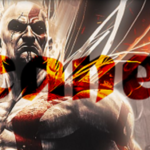
Do you enjoy Dark Fantasy? You will love this month’s CotM- Arcanearth! Great evil and selfless good, Magic, Angels and Fallen Angels. Religions play a big part of the world as well! This D&D 5E game has seen epic battles against ancient Dragons, Overlords, and giant frogs! The world itself has seen Ages of Angels, Dragons, Magic, Ice, and Rebirth! Come explore this rich world created by Omegabase and crew!
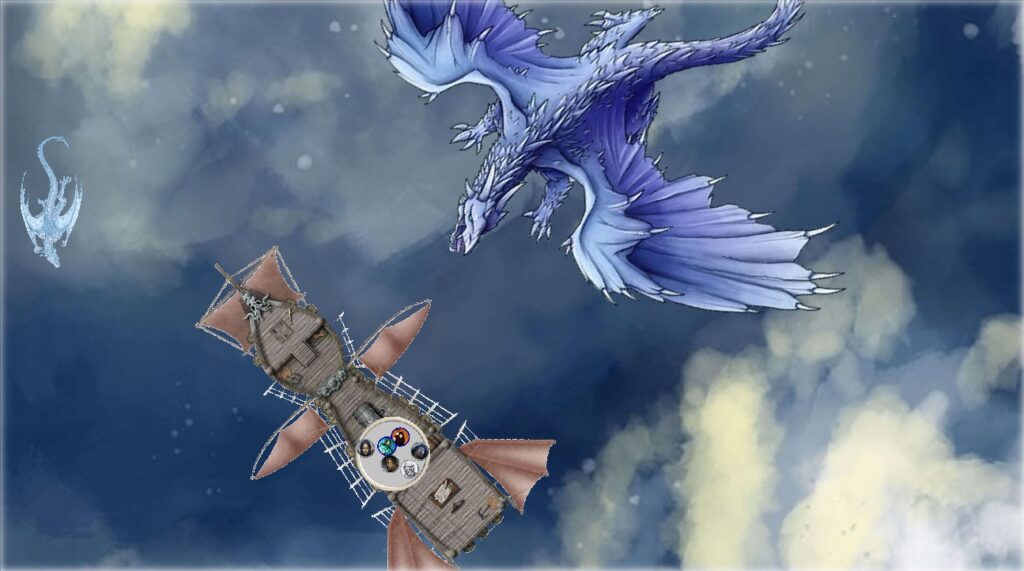
1. Tell us about the person behind the GM screen. Where are you from? Where can we stalk you on the internet? What do you do aside from gaming?
Not much of a social media presence beyond OP. Live and work out of Austin texas. Father of 2 earning a living from IT consulting.
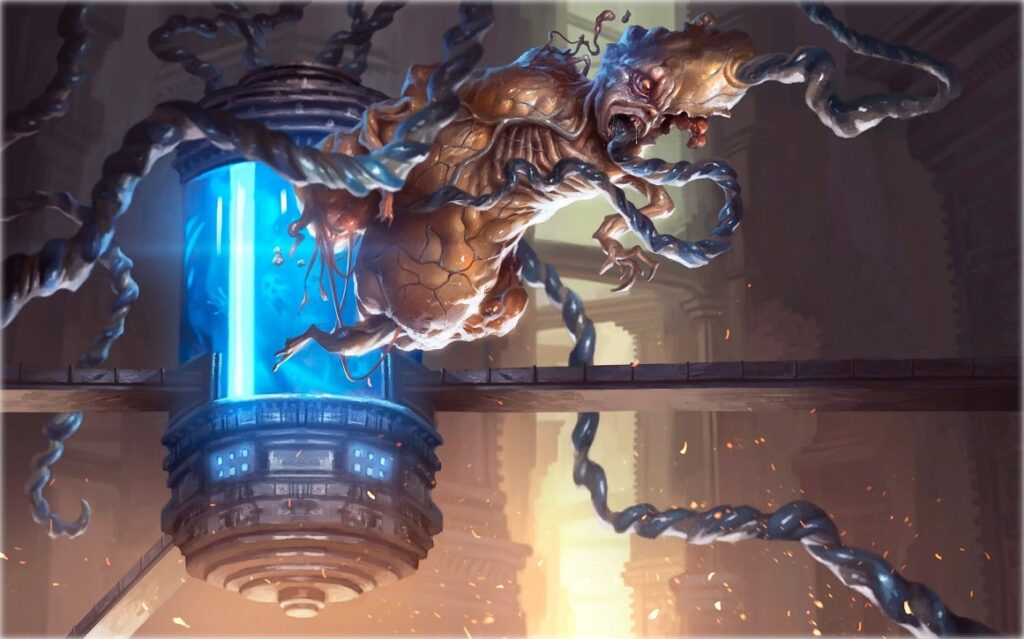
2. You made your home page your main artery to get information on your campaign- Why did you pick that approach? It is quite unique.
Didn’t see the need for another menu, convenient to have most info one click away.

3. You run D&D 5E- What do you like about it? Are there any things you dislike about it?
In most ways it’s the best edition of d&d. I did tone down the ‘easy mode’ aspect by eliminating hit dice for healing on short rests, limited healing on long rests, and allowing only one death save. This certainly contributed to the only 2 pc fatalities. Probably would use a different system next time around, like PF2, or integrate rules from other systems, like PF2. Also might consider an OSR system like the forthcoming Shadowdark.
4. You added Rogue Modrons as a race- what do you like about them, and how important are they to your campaign?
This came about from a short mini campaign where the players took a break from their main characters and assumed the personas of favorite henchman. These sessions don’t appear as separate logs but are mentioned in session 74 when one of the henchmen, who subsequently became a PC for a new player, revisited a key location from the mini campaign.
The player of Hoxton chose a modron he liberated from the plane of mechanus in session 63. Rogue modron seemed the obvious choice as this player has a thing for bots…played the robot Strelok in the last half of the gamma world campaign.
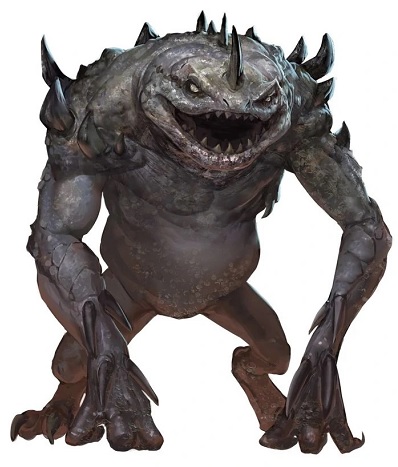
5. You have a very detailed world origin story, as well as a focus on angels and religion, for your game. How important are these to your characters?
Settings as such generally don’t have much utility to players and that holds true here as well. However the setting is indispensable to integrating the pc’s into the world events and related adventures when running an epic scale world-shaking superhero campaign such as this one. Ultimately the players will appreciate being part of a living world and adventures thereof.
6. How regularly do you play?
On hiatus currently, 2-3 sessions monthly when playing. Sessions average 3-4 hours in length.
7. How long has your group played together? How long have you been running Arcanearth?
Most of this group has played together since the 80’s. Most also played the last 50 or so sessions of gamma world 2754. Arcanearth started dec 2017. One player has the distinction of appearing in almost the entirety of both gw2754 and arcanearth (Grek/Strelok/Finch/Hoxton).
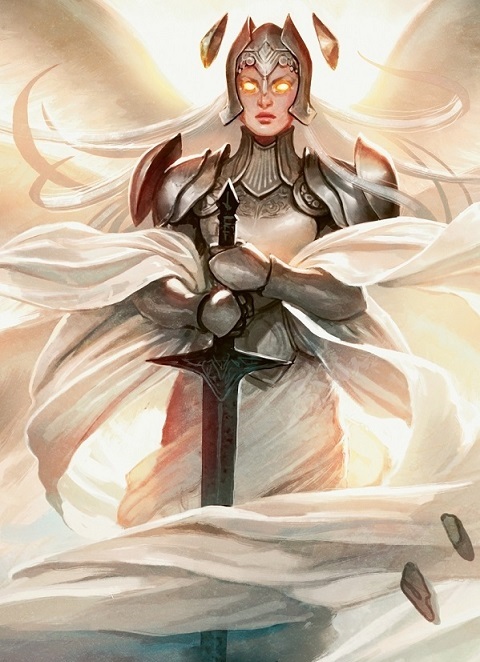
8. You won CotM all the way back in 2016 for Gamma World 2754- what keeps you coming back to Obsidian Portal?
Familiarity and lack of any worthwhile alternative. It’s a great place to organize and document your rpg campaign. A friend is starting a shadowrun 4e game soon, maybe we’ll throw that up on OP as well.
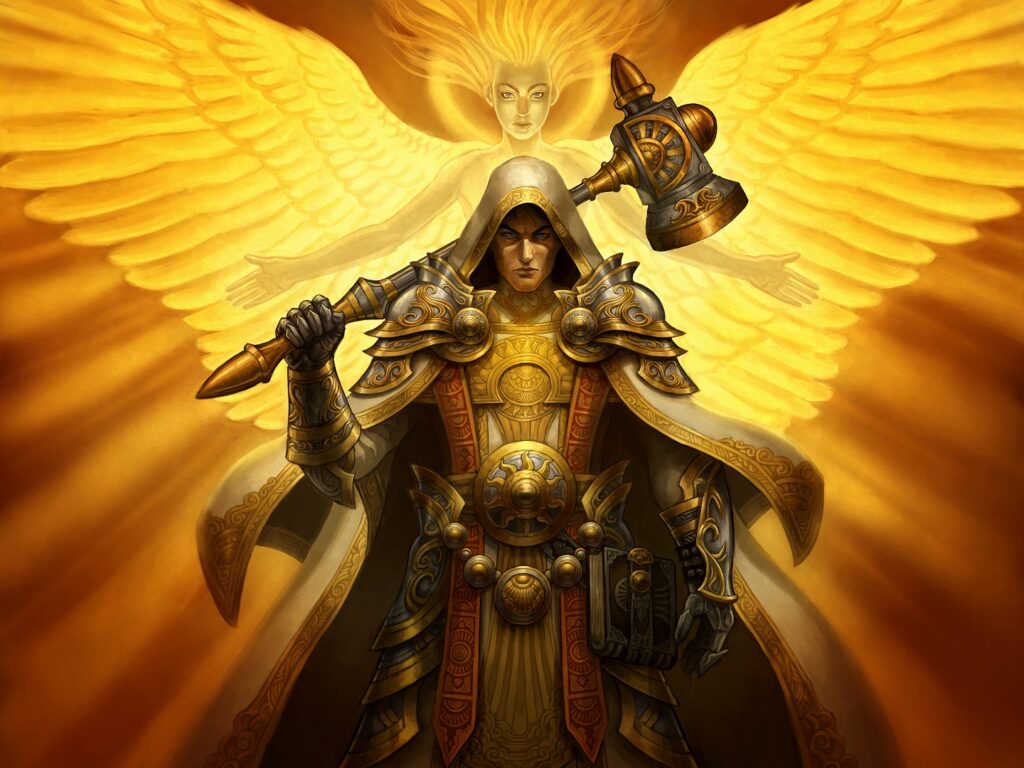
9. If you had to pick just one thing, what would you say Obsidian Portal helps you with the most? Do your players get involved on the wiki too?
PCs use OP for character sheets and backstories. The searchable database helps a lot for finding old npcs and events from past sessions. The character pages are the single most useful feature for both players and GMs.
10. Where do you draw inspiration from when preparing your game?
This setting is from fall from heaven 2, a total conversion mod for civilization 4. The epic scope of the macro game is inspired by the FFH2 setting and the fantasy works of Michael Moorcock. On the micro scale, you may discern the influence of Jack Vance. See the sessions about a certain ‘Green Pearl’.
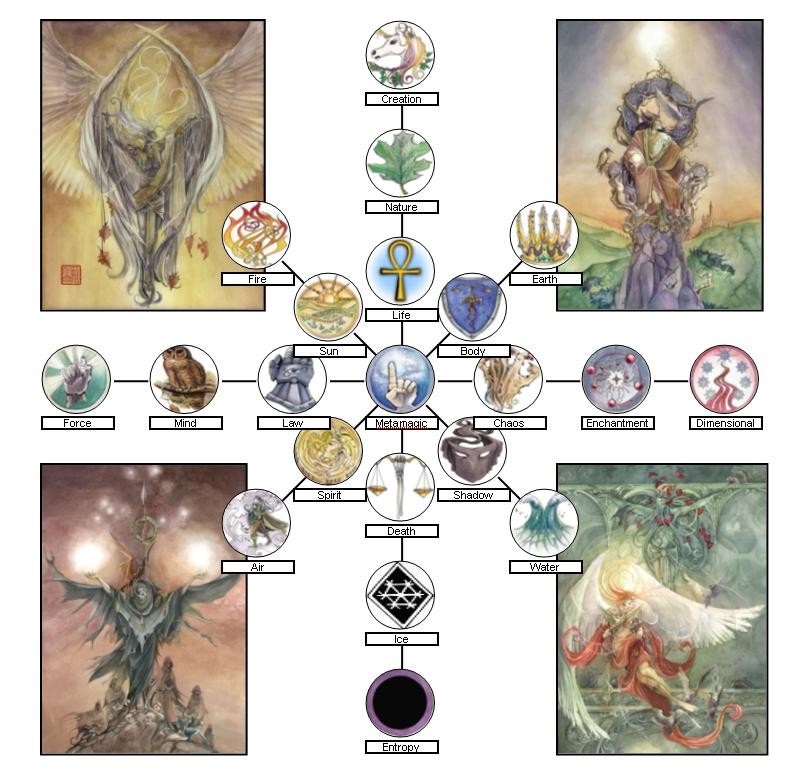
11. How much time do you usually take to prepare for a session?
On average across all sessions, not counting the original world wiki creation, probably as much time to prepare as to play (3.5 hours). The wiki and world building, hundreds of hours over the course of years.
12. What would you say has been the best moment your table has had thus far in your game?
For me, the green pearl sequence. For the pcs, possibly the waking of the sleeping god Danalin and defeat of the Overlords, or more recently, the close battle with the ancient red dragon Acheron.
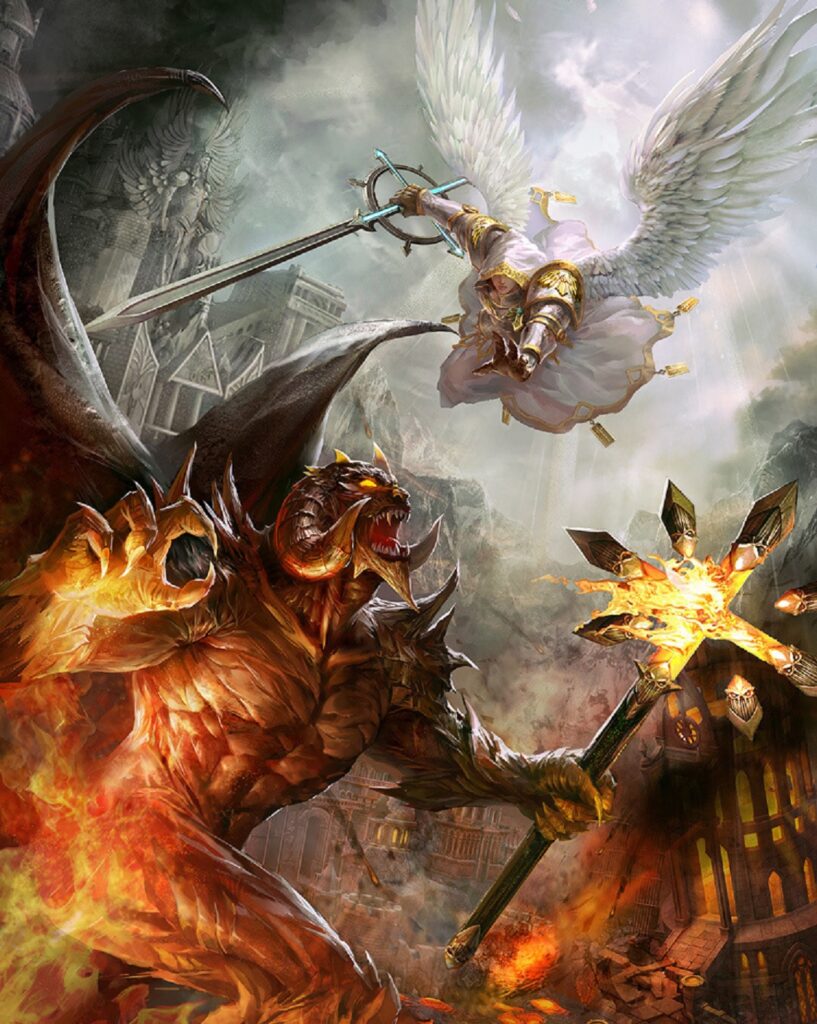
13. Okay, before we get out of here, give us some of your best GMing pearls of wisdom.
Don’t be afraid to feature a few challenges where it is uncertain or even unlikely the pcs can win outright. Have an out if/when they lose, that leads to more interesting possibilities rather than simply a TPK. Epic foes filled with hubris typically want more from pcs than merely their deaths. Such as their services, use as bargaining chips, information, entertainment, conversion to the cause, experimentation, torture, or simply groveling submission. All of which provide ample scope for a dramatic comeback. Players (and GMs!) enjoy nothing more than hard-won triumph snatched from the jaws of defeat.
Victor
“Age just a number, one and one and one. We stronger than number. Next year I’ll be younger”
Li Na
Thank you to the community for making this campaign of the month possible! That’s all for now, join us on our next adventure October 1st, and don’t forget to nominate your favorite campaigns for our next Campaign of the Month!
Creator Spotlight | An Interview with Brenda Cass of Skirmisher Publishing
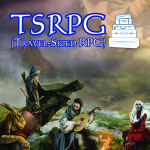
In a world where gamers are always on the go, TSRPG (Travel-Sized RPG) is the perfect game for those who want to enjoy a roleplaying experience without having to lug around a heavy rulebook or dice. Created by Brenda Cass of Skirmisher Publishing, TSRPG is a lightweight game that can be played anywhere, with just a few simple rules.
In this blog post, we interview Brenda Cass to learn more about TSRPG and her inspiration for creating it.
What inspired you to create TSRPG?
The very first draft of TSRPG was written, I think fittingly, on a hotel notepad while I was on vacation with some gamer friends. We ended up with plenty of downtime between activities that we’d normally occupy with gaming but, not having brought any of our usual tabletop stuff (dice, rules, characters, etc), that seemed unavailable to us. At the time I was participating in somewhat regular game-design challenges on d-Infinity.net, so I told my friends I’d design a game that could be played without any of that stuff. It began as a thought experiment and a fun little challenge but ended up working super well in play.
What are the key features of TSRPG that make it a travel-sized RPG?
The game’s original design constraints were that all the rules had to easily fit in your head, there couldn’t be any book keeping, and it couldn’t require any physical randomizers like dice, etc. As a consequence of those constraints TSRPG has simple mechanics that are solely concerned with creating and moving along a shared narrative. Character sheets, such that even they need to exist at all in TSRPG, fit onto a cocktail napkin, hotel notepad, or whatever small piece of paper is at hand. Randomizing outcomes involves guessing numbers, and most importantly the Storyteller has no stat blocks, hit points, ability points, or what have you to keep track of; their only job is facilitating the narrative and helping make sure everyone’s having a good time.
How does TSRPG differ from other tabletop RPGs?
TSRPG differs from other tabletop RPGs in a few ways. It is a high-trust, rules-light system, which makes it feel very different from a lot of the crunchy RPGs out there. It’s diceless, which is definitely a less common feature (don’t worry dice fans, there are optional rules for using them). TSRPG puts a lot of emphasis on crafting a shared narrative with other players in the pursuit of overcoming the story’s challenges as a party, which is a bit different from the mode many folks are used to that involves selecting one of their character’s abilities when their turn comes around in the initiative order.
What are some of the challenges of designing a game that can be played anywhere?
I have to assume that people playing TSRPG are going to be just as resource constrained as I was when I wrote the draft and played it for the first time. For a lot of designers the reflex with RPG design is to have a kind of “more is more” sort of mindset, but for a game like this any mechanic we add potentially puts it over the edge into something that can’t be played on the go. I’ve encouraged folks in the Skirmisher Game Development Group to go play TSRPG with family, friends, or strangers while they’re out traveling. This informed a lot of design decisions that we never had to consider before, PDFs of scenarios are probably being viewed on a cell phone rather than a laptop, new rules need to be highly modular so that they can be selectively added or ignored depending on how many rules folks are up for keeping in their heads, scenarios are more likely to be interrupted so encounters need to be easy to pick up and put down. We find ourselves having to adjust and adapt a lot of what we’ve been doing because TSRPG is so different from anything we’ve done before.
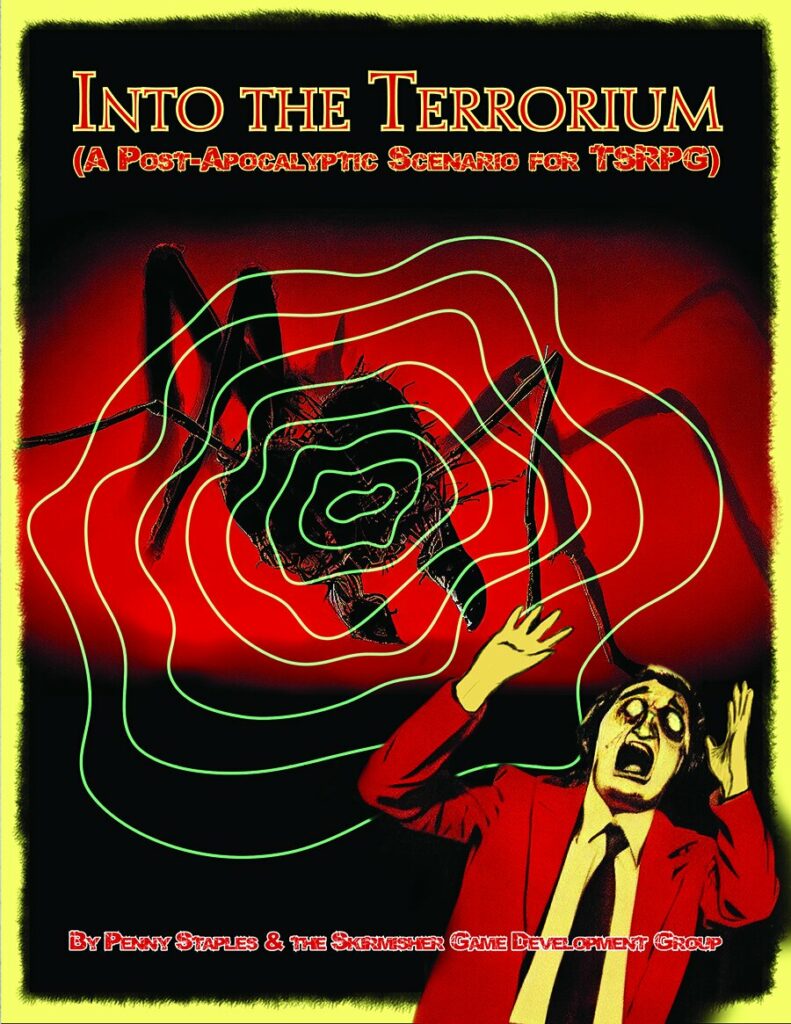
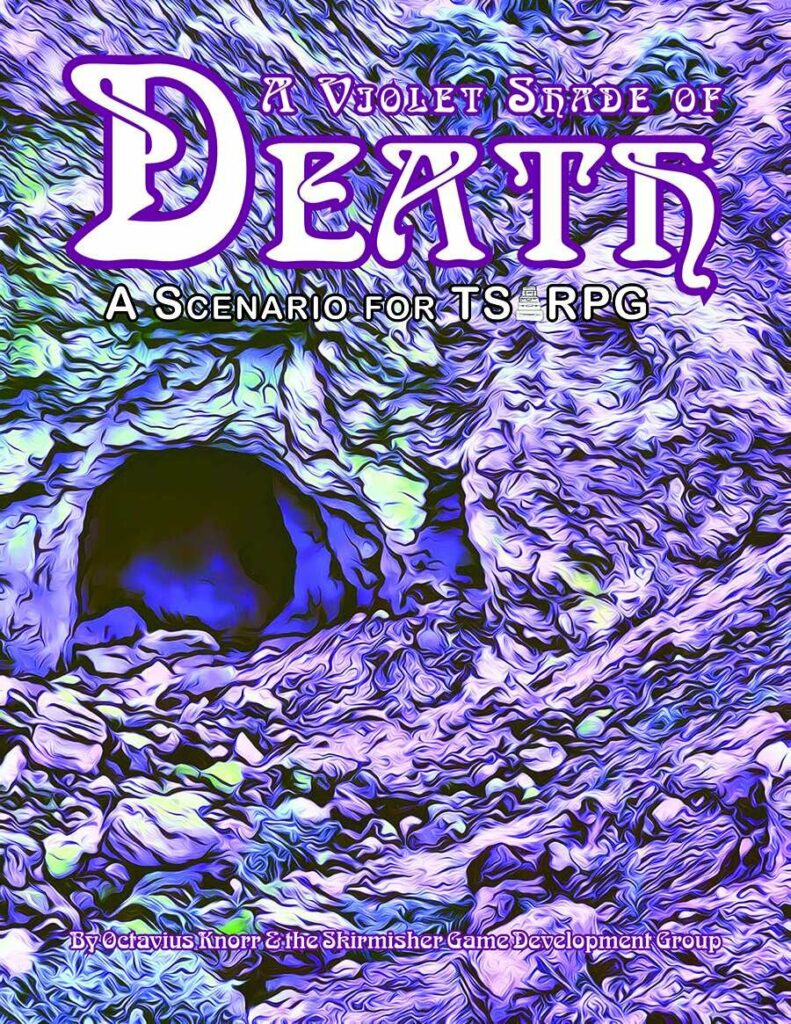

How have you seen TSRPG be used in different settings?
The nice thing about TSRPG being a rules-light system is that you don’t run into any mechanical conflicts with different settings. I’ve seen it used for post-apocalyptic, fantasy, sci-fi, modern day, fairytale, horror, you name it, and there’s already scenarios published for most of those genres.
What are your plans for the future of TSRPG?
The big plan right now is a self-standing game, with its own unique setting, that uses an adapted version of TSRPG that we’re calling “Aesopia”. Aesopia will feature animal people and lean toward humor, quirkiness, and absurdism; it’s the sort of game we wouldn’t want to pair with a more mechanics heavy system. It will have everything folks need to run their own scenarios in that setting and also several supporting scenarios written by us. Skirmisher also recently published a kind of “conversion kit” for playing old school adventure modules using TSRPG called “OS-TSRPG”. It makes it so you can bring your favorite module along with you in a suitcase or backpack and play it on the go with little to no prep. I’m excited to see similar tools for scenarios designed for other systems.
What advice would you give to someone who is interested in trying TSRPG?
Watch one of the samples of play on Youtube, then pick out one of the pre-written scenarios that sounds the most fun to you and give it a try. They’re cheap, they all have a copy of the core rules in them, and any scenario specific mechanics are called out inline. The core rules all fit on one page so learning them isn’t a big time commitment. I’d also say that because TSRPG is a high-trust game, don’t play with jerks because they can really ruin the experience, but I’d also give that advice for playing any other game.
What are some of the challenges of running TSRPG for a group of players who are not familiar with tabletop RPGs?
Fortunately TSRPG is very accessible to folks that are new to tabletop RPGs, and I’ve run many sessions where you’d never know the people at the table had never played an RPG before. The advice I give to new players is to think of their favorite media, books, tv, movies, set in that genre for inspiration on what characters like theirs might do to overcome challenges in the story.
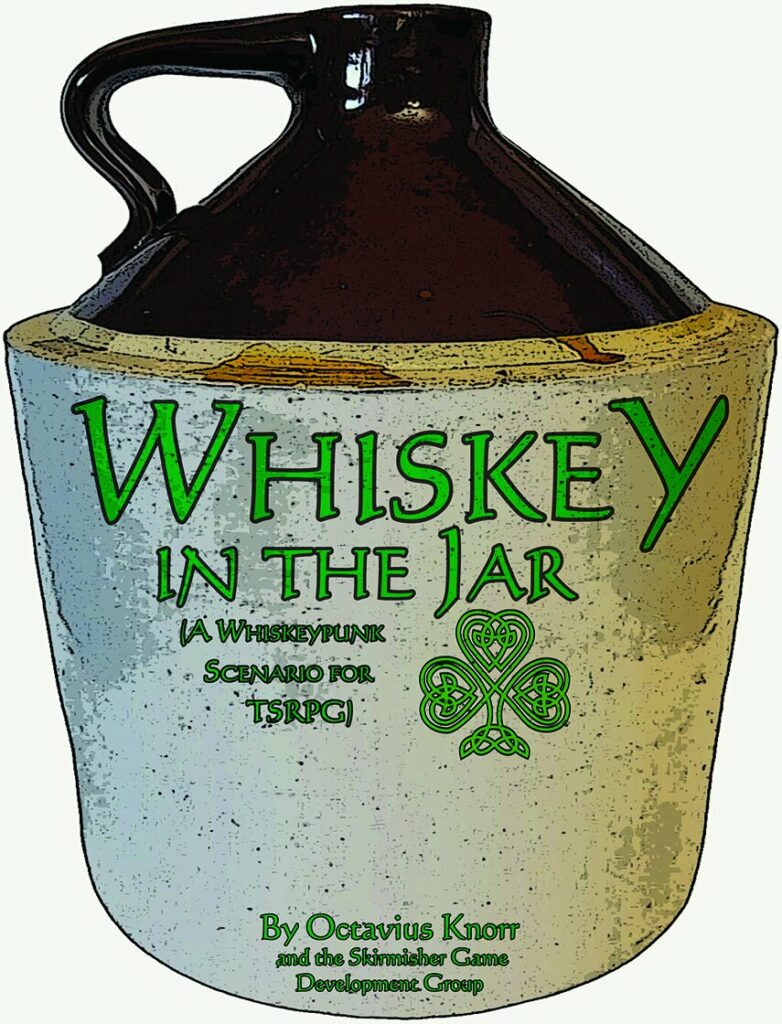
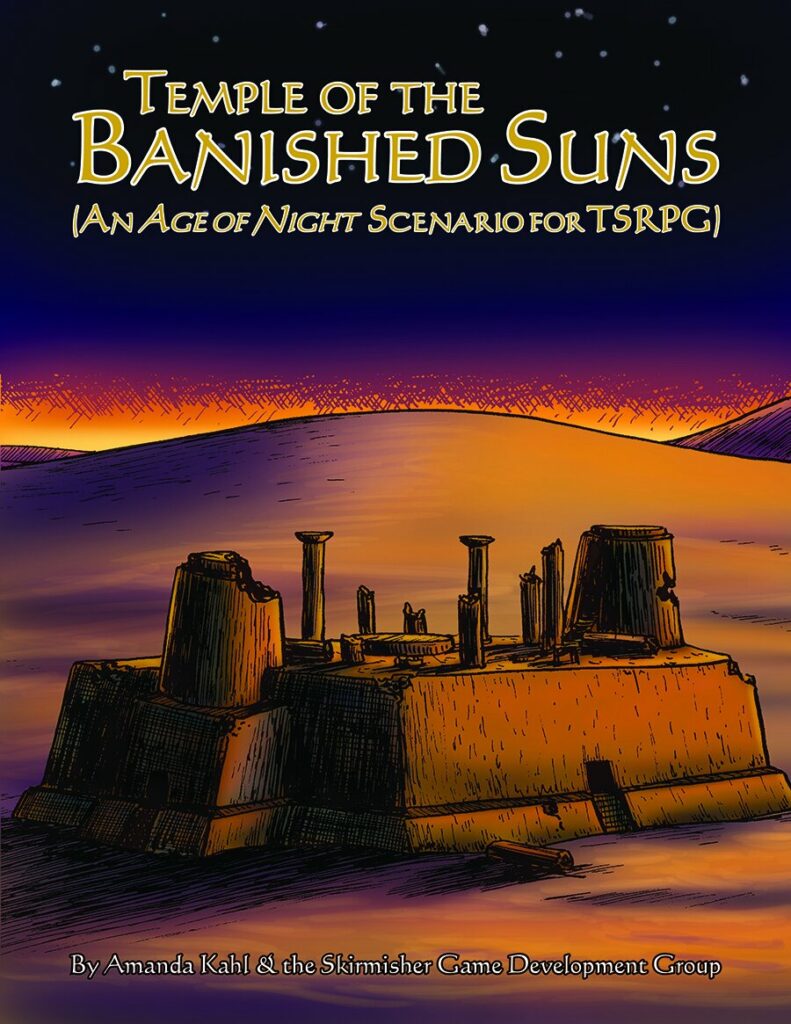
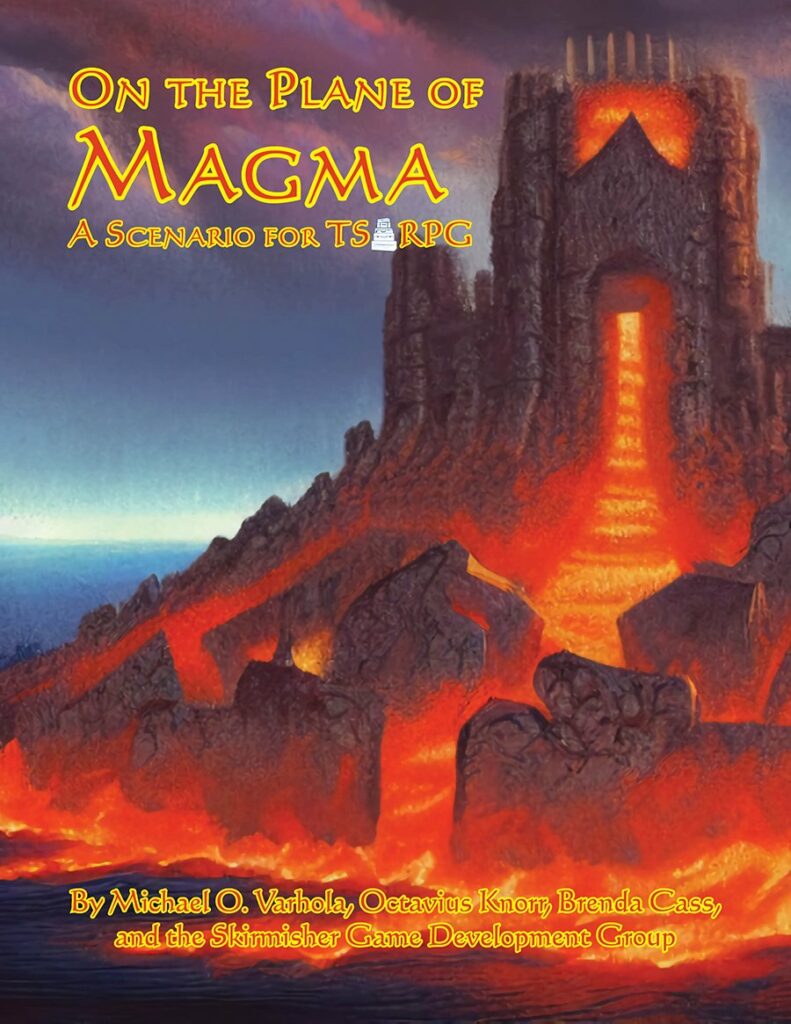
How do you balance the need for simplicity with the need for depth in TSRPG?
TSRPG offers a modular set of optional rules that can be used to add mechanical depth to the game. Optional rules don’t rely on each other, so that leaves players free to cherry pick specifically the ones that are relevant or fun for their scenario without having to worry about breaking the game. A lot of folks will miss the tactical depth of a more rules heavy game, and that’s okay, TSRPG wasn’t designed to scratch that itch. I think that for a lot of people, while TSRPG wouldn’t be their primary system (though I do know several folks in Germany that play TSRPG exclusively now), it could be the second system they learn and turn to because of the flexibility it offers.
What are some of your favorite scenarios for TSRPG?
“A Midsummer Night’s Scheme” because playing a Shakespearean fairy is a hysterically fun time, “Temple of the Banished Suns” because we got to finally do a crossover with fantasy artist and friend Amanda Kahl’s “Age of Night” comic series (and now she can’t claim she isn’t a game designer anymore).
What are some of the things you have learned from the feedback that you have received from players of TSRPG?
TSRPG almost wasn’t published, I didn’t think folks would be very interested in the quirky little game I wrote on a trip many years ago, but was I ever wrong. Folks have hacked TSRPG to run it GM-less, sent in translations of the game and its scenarios for three different languages, used it in classrooms to help teach English, and so many more things that I never expected. Players have definitely shown me how vast and creative the tabletop RPG community is.
What’s the most creative thing you’ve seen a player or GM do with TSRPG?
This expands a bit on one of my answers to the last question. The most amazing thing I’ve seen done with TSRPG is using it to teach English to kids affected by the war in Ukraine. The same group of volunteers has also translated it into Ukrainian, and Skirmisher has partnered with them to distribute copies of the rules for free to Ukrainian people that are interested in them.
You can find Brenda on Twitter. Skirmisher Publishing is a small press publisher of tabletop role-playing games. They are known for their innovative and creative games, such as the award-winning TSRPG. Skirmisher Publishing is committed to providing high-quality games that are both affordable and accessible to gamers of all levels. They also offer a variety of free resources for gamers, such as character generators, rulebook errata, and adventure modules.
Obsidian Portal Campaign of the Month August 2023: Theophagie

This month we take a step back in time, joining GM AshleyMcdniel and party in their campaign, Theophagie. Set in the Iron Age, Theophagie explores a world impacted by an event known as the Theophage, where the majority of the male Greek Deities were killed, leaving large power vacuums and spawning the creation of matriarchal societies throughout Greece and Gaul. Here the Gods and aren’t just concepts- but real beings that walk the earth and see fit to involve themselves in mortal affairs. Join us in talking with GM AshleyMcdniel as he shares his insight, tips and tricks!

First off, feel free to tell us about the person behind the GM screen. Where are you from? What do you do aside from gaming? Alter Egos? Life partners? Family? Where can we interact with you on the internet?
My name is Ashley (He/Him) and I live in San Antonio, Texas. Besides table top RPGs I also play Magic and Battle Tech. I also enjoy swimming, fishing and target shooting. I live with the love of my life Charlie (they/them.) If you wanted to chat about gamming you can PM me on Discord at scarecrow#2992
Tell us a little bit about the setting of your game. What made you choose our own world for the game?
Theophagie is an anachronistic game set in Europe. It is a way to explore the myths and legends of several cultures and ask see how they interact. A friend of mine name Josh found obsidian portal and introduced me. I feel in love and have been using it ever since.
Tell us a little about why you chose Dungeons and Dragons 3rd edition for your game system. How do you feel this system supports the type of game you are running?
I have a lot of fond memories of DND 3.5. However, it is not without flaws. I looked at it as a place to start and made a huge amount of home brew to change the flavor of the game. DND 3.5 has a huge amount of very high-power class and feat combinations. I wanted to have a more dangerous, high risk feel so I made all new class progression, level progression and an array of feats that allowed for that. Then I used my player base to provide feedback so they had input and buy in to the world and its development.
Let’s talk about the visualization of your campaign. What made you choose this design (color schemes, banners, dividers, etc.)?
The design really started with the picture of the trireme on the home page. The red, white and black made the picture pop. Then we just stuck with that.
You chose to share your design with the community and release the CSS code. It was so important to you that you placed a link to it on the home page of your campaign. You also give credit to the artist whose images you used by linking to their work. Why was this important to you?
The code part is easy. If someone wanted to know I did something they can just look. Now for the art. So, I have quite a few friends who are artists and work on commission. Now the first campaign in the setting was run in Gaul that was under Greek influence. I was looking around the internet for pictures of gods and found a wonderful picture of Hera and loved the style. I tracked down the artist and looked at the rest of what they had done and fell in love. I found their contact info on Deviant art. Turns out they live in France. Messaged them on FB and paid them to use it. They up to that point had just done it for fun and told me they had never been paid like that before so that made me feel pretty good. Since then, they have even published a book and are selling it on Amazon.

You have given a great deal of thought to the integration between your game system and your settings. Tell us a little about this integration (for instance, classes are limited by location).
Well, I wanted each nation to be an opportunity for a different flavor. So, the way the magic classes work in Egypt, Britain and Greece are all different. This also means that each God has a different type of connection to their disciples. I felt it was natural for Druids to be native to Britan and Bards to be native to Scandanavia. After doing some expansion and talking with my players we all collaboratively figured out what classes belong where and leaned into the mystisim from that area for insperation.
Tell us about your change log in the wiki page. Why do you keep it and why is it public?
The players wanted to be kept up to date about additions and the feature was a useful way to do that.
Tell us about the Adventure Log. You seem to have run several games in this setting already. How does that work? Do you play several games at the same time? Or one after the other?
The first game was centered around Gaul. After that Campaign was over one of the PC’s had died. One of the players Josh very much wanted to run a game in the setting so he took the second adventure. It was a sailing adventure in which we took the body from Marseille to Delphi so we could get the gods to resurrect them.
Tell us about the way you arrange your characters. I see characters have few tags with names. How do you keep track of the NPCs? How do you know the context under which each NPC was created?
The NPCs are any person have the opportunity of meeting along the way. Most are reoccurring unless they die (which is also a tag.) Most of time I will tag a location with the person and then the person at the location on the wiki. Below is an example.

Then on the other side of the link is also a reference to the person.

How do the players contribute to the world design, if at all?
They do a lot. You can the best designed world but if the players do not feel like they have agency in it they are not going to have as much buy in. They are able to interact with the world any way they want. As an example, we are currently playing in Carpathia which is the setting of werewolves and vampires. A count was a little to cruel and evil for their liking so they defeated him and took over responsibility of the area. This is also reflected in the wiki.

If you had to pick just one thing, what would you say Obsidian Portal helps you with the most?
Consistency. It allows me to organize my thoughts and present the world in a consistent way.
What would you say is the biggest highlight of your game so far (please also provide images and links if possible)?
So, Mike was playing his first character in our first campaign JAQULEENE GRAVOIS. They had been a charisma-based character and a talker. They went to go get an item out of the ruins of Notre Dame. They kicked open the door and started to make a speech to intimidate them. There were a number of skeleton archers on the other side of the door which are both immune to being intimidated and also immediately only shot at him because they had been the only person they could see. One of them rolled a crit, we rolled a location dice which landed on head and they took more damage than they had HP. They also failed a con check and immediately died. That single choice set up the path for us to have a second campaign but also what we planned to do. It also hit home that the game could be very lethal during combat if you are not careful.
Okay, as a last question, we always ask for the GM’s “pearls of wisdom”. What GM insights can you offer the community this month?
Request feedback. At the end of every game, I ask the same questions for every player. Likes and Dislikes. Long-term and short-term goals. In addition, we vote for MVP and the winner gets a little extra XP. It is a way to celebrate each other when we role play well.
That’s all for this month folks! Don’t forget to head on over the the OP forums to nominate your favorite campaigns for our next Campaign of the Month!
Update Post – July 20, 2023

Hail, Portal People!
The season clock has chimed again, so it’s time for another reckoning. See below for all of the new features and bug fixes that were added to OP since the previous Update Post.
If you have any questions, comments, or feedback, feel free to post them in the Community Forums, or email support directly at [email protected].
Obsidian Portal Campaign of the Month July 2023: Esomor Prime
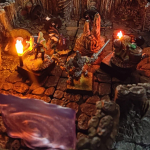
Enter the intriguing realms of Esomor Prime, a 5th edition D&D campaign set in the homebrew world of Sam. Here we find a world dominated by 13 powerful noble houses, who rule over dozens of factions and hundreds of lesser houses. In this world Sam runs SIX separate groups, totalling TWENTY FIVE players, all in different regions of the world, for now…

Tell us a little about the people behind the logs? What’s your group like, how did you all start playing together, and what drew you to your current system?
The groups are all friends of mine through various corners of my life, and I use one Obsidian Portal site for all of them. My original group has been playing D&D since 1995 and we were brought together back then by our mutual friend and first DM, Roy. I eventually took over as the full time DM of that group and have never relinquished the reins. The other groups started trickling in over the last 5 years, and include a “brewers group” a “work group”, a “circle of friends new to the game group”, and “friends from college group”, and an “online only group” for those out of town.
How often do you play and how do you generally do so?
The online group is constantly going in a “play by post” format. For live sessions I usually DM every two weeks but with so many groups, they only get to play every two months. Sometimes I am booked solid 4 months out!
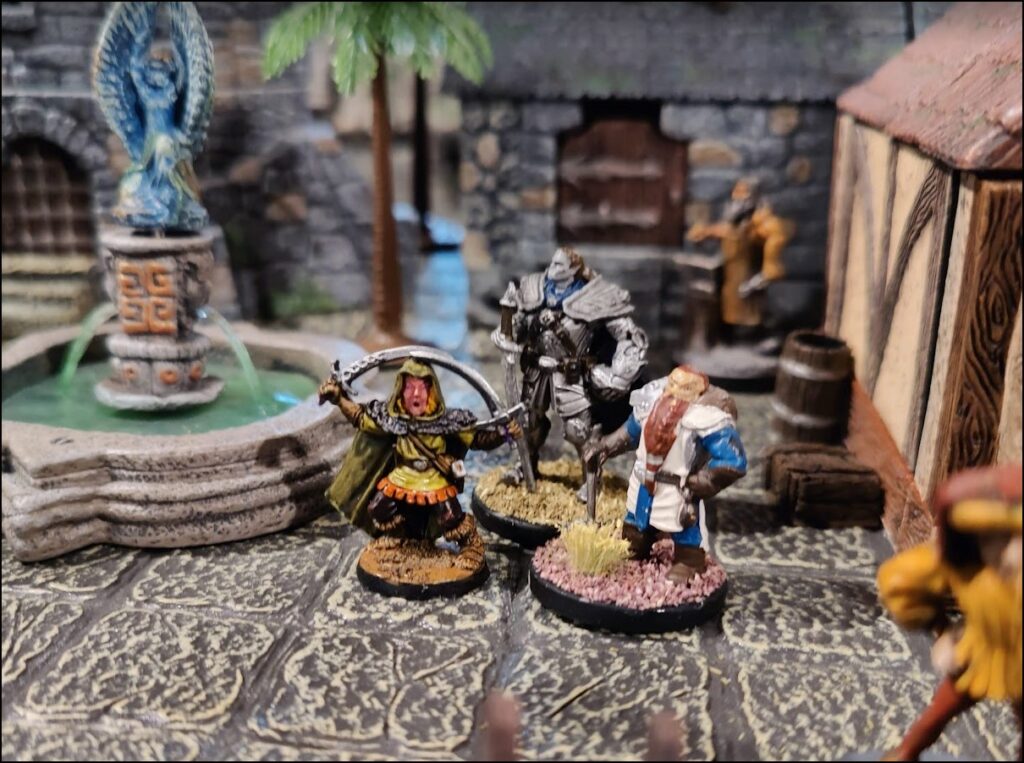
What’s the primary inspiration for your game? What themes do you and your players like to explore or situations you dream would come about?
For this current campaign I am running, I wanted a Game of Thrones like setting with lots of political intrigue with strong noble houses and powerful factions and huge world-changing story arcs. My “oldest” group is 8th level and my newest is 2nd, so some of them are just now starting to see the beginning of the “big picture”. I do have a dream of assembling an All-Star game with one player from each group and them all coming together to form an epic, end-of-campaign, world saving task.
You have a mighty list of Player Characters, what complications does that add for you and your players?
Obsidian Portal makes it so easy for all of my players to sort by their own campaign, but there is so much crossover information at their fingertips that each group can indirectly learn from each other group. Not sure who this NPC was? Look them up on the website! Maybe another group has run into them before and you can learn even more about them!
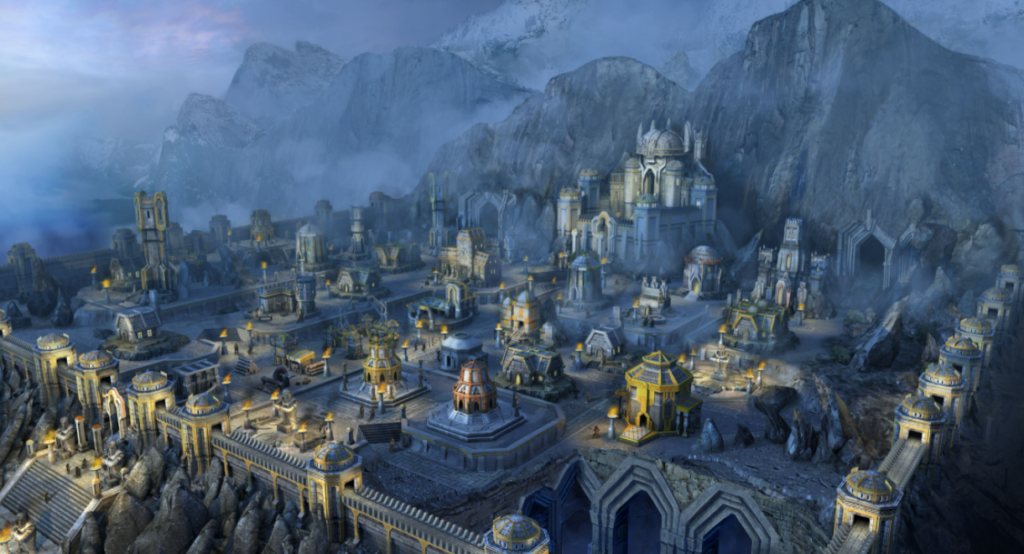
How long did you spend developing the style of your site, and did you have any help?
This huge campaign has been a dream of mine for a long time and I have been tinkering with the idea for years. For the longest time I would just make notes on what style of campaign I wanted to run and eventually this homebrew world started to take shape. As a previous campaign world was coming to an end, I launched this one to transition into. Lately, ChatGPT has really helped streamline the process for some of the minor details.
I love your inclusion of art/memes in the adventure logs, do you create them by yourself, or do share that responsibility?
The Bing Image creator through DALL-E has been a huge help, such a time saver!
As you’ve been on Obsidian Portal for a while, what is your favorite feature for helping to manage your campaign?
Obsidian Portal is so easy to use! It looks great, links are easy to create, and it is a breeze to import images. Plus having one single wiki page for the “Order of Bones” faction that is seen across all groups is a HUGE time saver.

Back to your game, what would you say has been the best moment your table has had thus far in your campaign?
Each group has had some amazing moments, but one of my favorites was my “Bronzewood Valley” group following up on a random minor encounter I left for them where they found a broken compass on a trail. They thoroughly investigated who left it, where it was purchased, and was able to track and save the lost explorer. Through a long series of other events, this led them to working with that adventurer to establish their very own town in the mountains, all from this random broken compass!
Let’s round this out with one of our favorite questions for our featured GMs! If you had a secret sauce for running a great game, what would be the most important ingredients?
Have fun! Sometimes I worry if I have enough prepared for a session, or do I have enough handouts, will the battles be challenging, but once the session gets rolling just go with it and remember why everyone has taken time out of their day to play, so have fun!
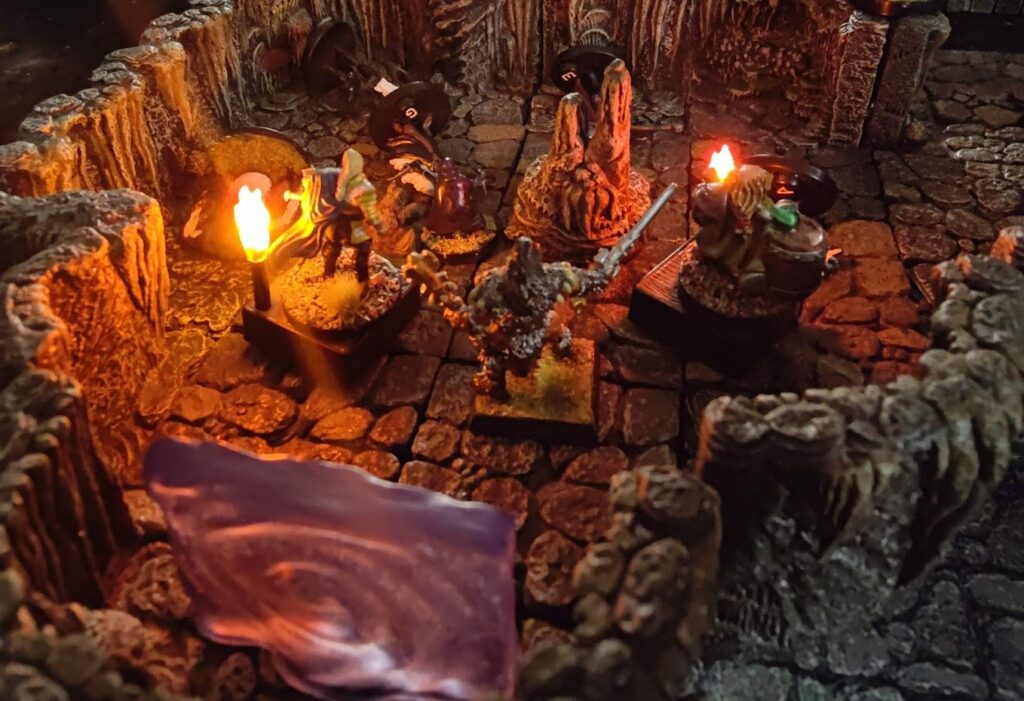
That’s all for this month folks! Don’t forget to head on over the the OP forums to nominate your favorite campaigns for our next Campaign of the Month!






